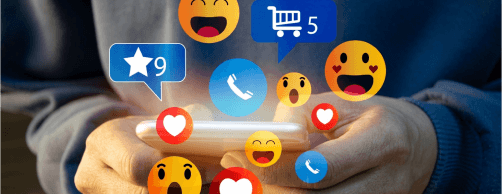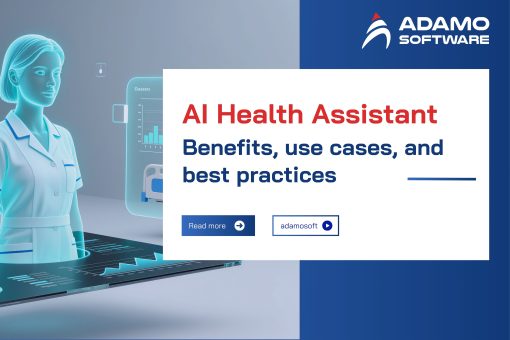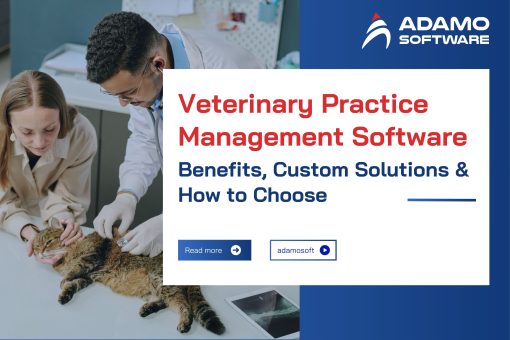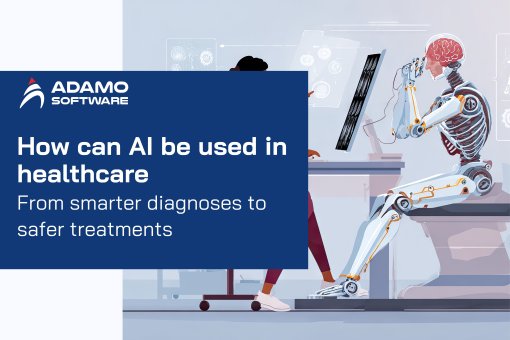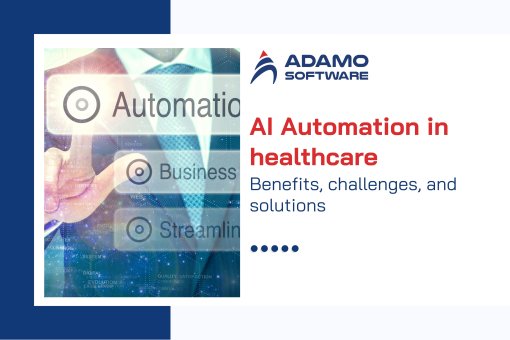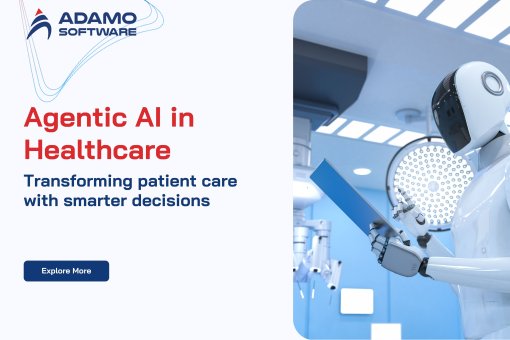Healthtech App Development: Features, benefits and complete roadmap
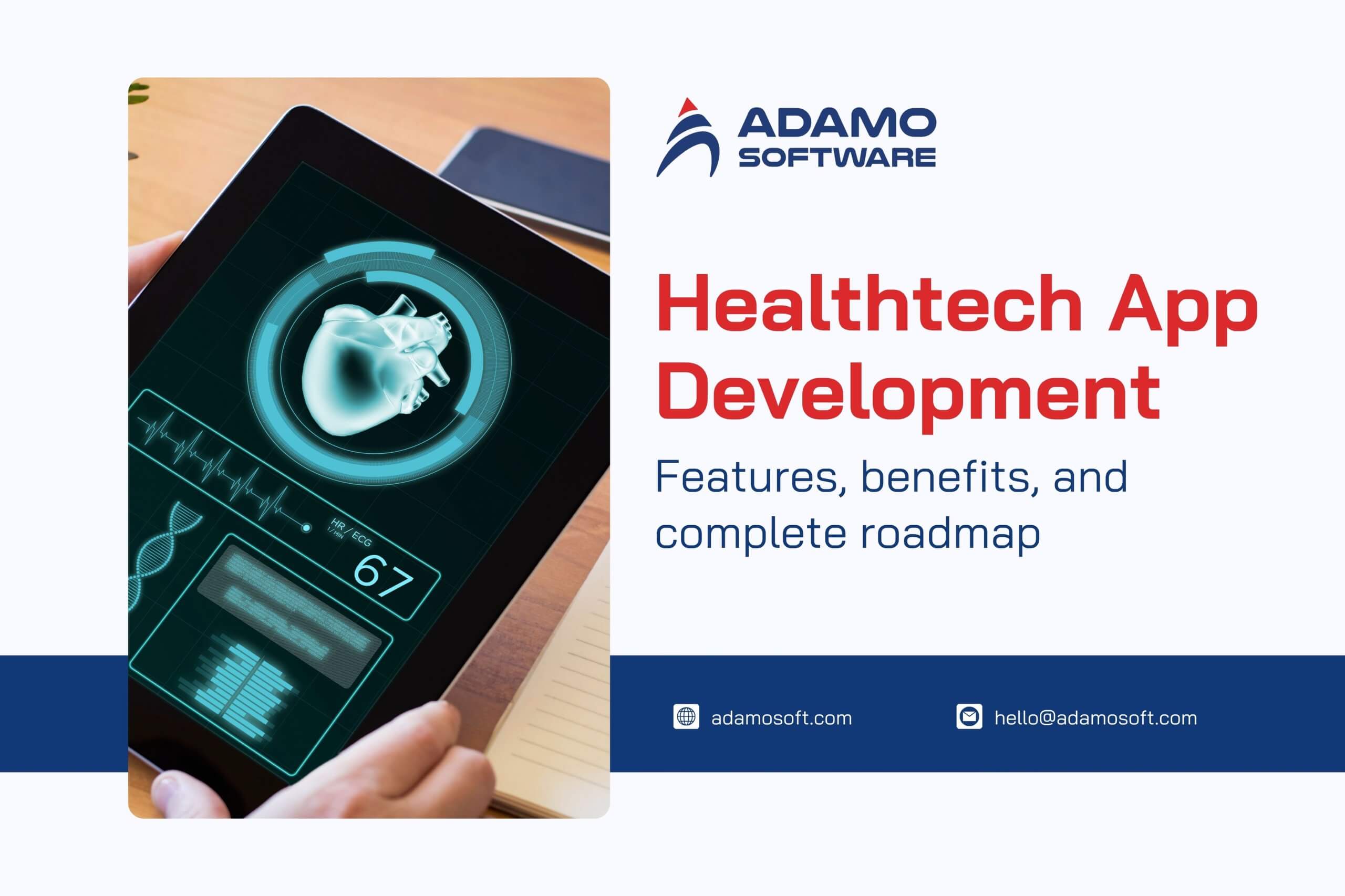
Explore the complete guide to healthtech app development: key features, step-by-step process, and how to build scalable, secure healthcare solutions.
Healthcare apps are playing an increasingly important role in the modern healthcare system. Healthtech apps help connect patients with healthcare services anytime, anywhere, from scheduling appointments and monitoring chronic conditions to remote consultations.
However, healthtech app development is more than just writing software. Healthtech app development is a process that requires a combination of understanding users, complying with regulations, and designing experiences that fit real-world industry needs.
Not all apps work in the real world. Many fail because they lack security, are difficult to use, or cannot handle complex situations in the healthcare environment. To create a reliable solution, businesses must take the right approach from the start.
This article will provide you with:
- The concept of healthtech app and their role in the digital ecosystem
- Necessary features for effective application operation
- Healthtech app development roadmap from A to Z
If you are considering investing in a medical application, here are the things to know before you start. Let’s begin our journey into the world of healthtech app development!
I. Healthtech app development: What is it?
First, you should explore about What is healthtech: An ultimate guide for starters here.
Healthtech app development means creating software that helps people take care of their health—or makes it easier for professionals to do their job. These apps can be as simple as a step counter or as complex as a telemedicine platform. They run on phones, tablets, or computers.
In simple words, any software created to aid in medical care or improve health is considered a healthcare app. This includes everything from fitness trackers to complex telemedicine platforms.
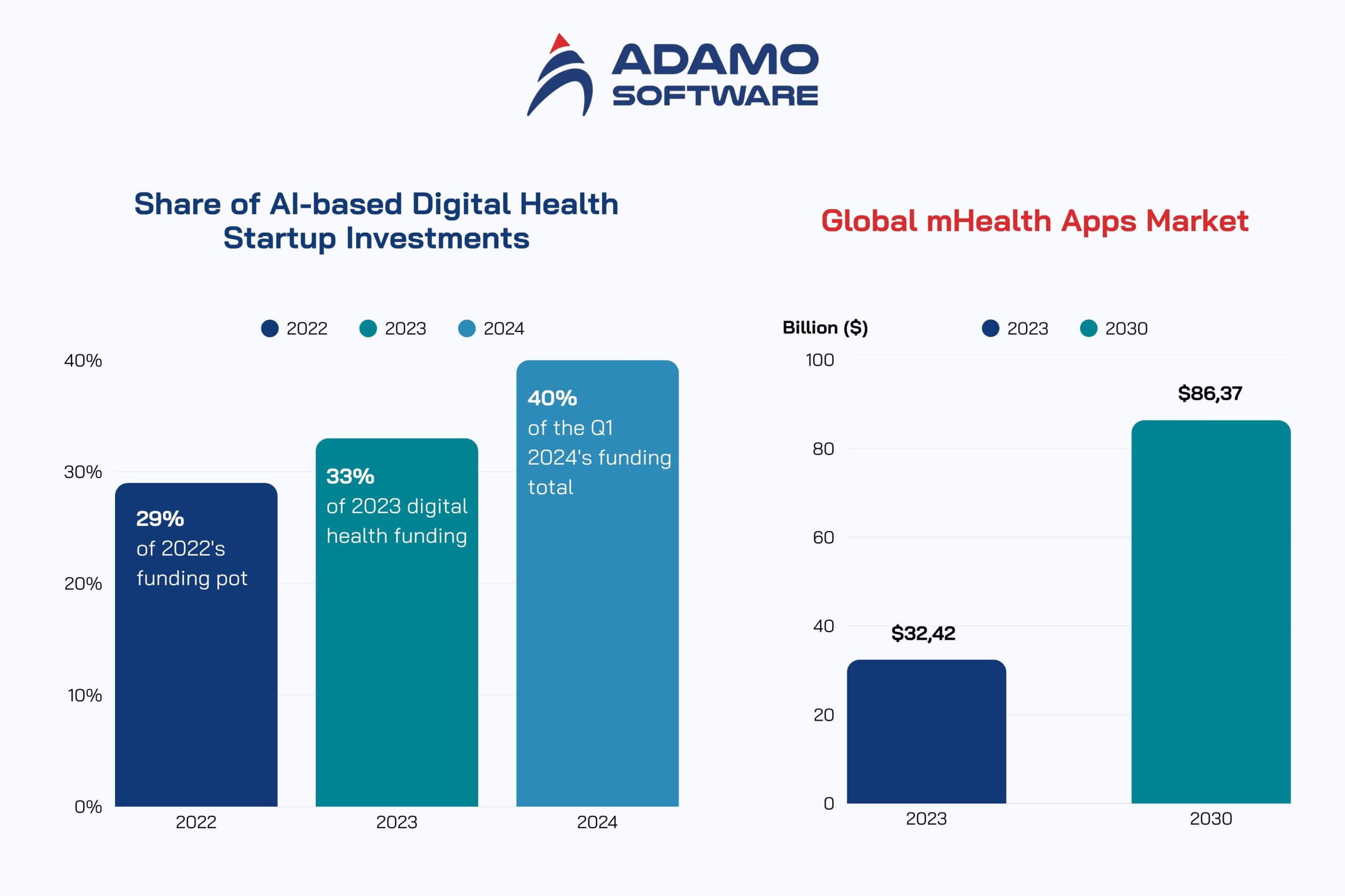
The need for digital healthcare keeps rising. According to Fortune Business Insights, the global digital health market could grow from $376.68 billion in 2024 to $1,500.69 billion by 2032, with a yearly growth rate of nearly 20%. In 2025, revenue is expected to reach $427.24 billion.
This growth reflects a clear trend: healthcare is moving beyond hospitals. Healthtech apps help fill the gaps in traditional care. They empower people to take charge of their health and let providers deliver services anytime, anywhere.
For example, a telemedicine app can connect rural patients with city-based specialists—overcoming distance and improving access to care.
II. What are must-have features of an efficient Healthtech App?
When building a healthcare app, choosing the right features impacts the user experience and determines the effectiveness of the entire system. A good app should support end users and healthcare teams, ensuring accessibility, security, and flexible integration with existing infrastructure.
Here are the must-have features for any healthtech product:
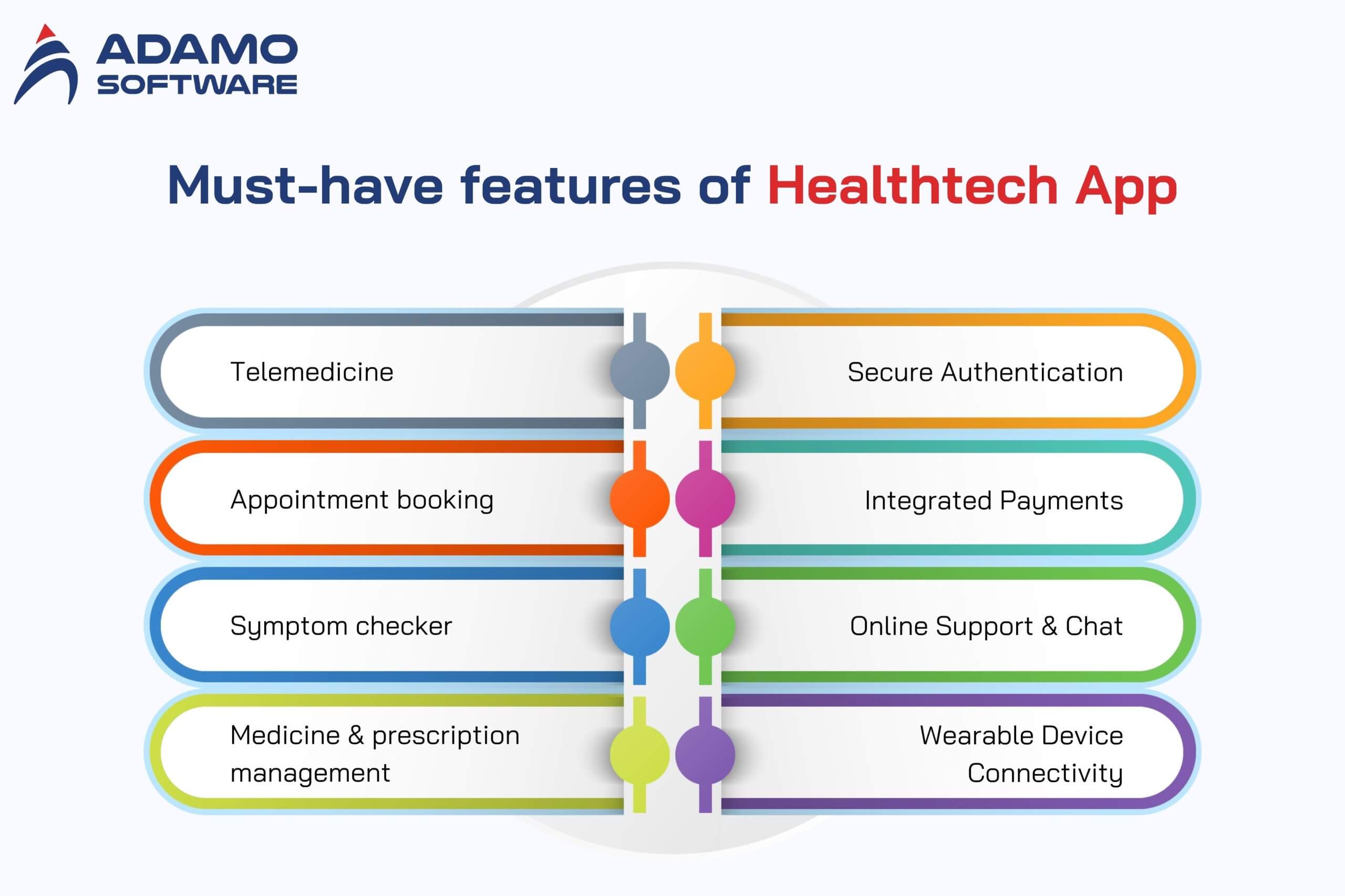
- Telemedicine: Allows remote medical examination and treatment via video call or chat. It saves time and is convenient for patients living far away.
- Appointment Booking: Helps patients make appointments quickly, reduces duplication of appointments, and reduces the burden on medical facilities.
- Symptom Checker: Supports users in self-checking initial symptoms to know when to visit the doctor.
- Medicine & Prescription Management: Reminds to take medication on time, saves prescriptions, and tracks medication history.
- Secure Authentication: Protects health data with 2-layer authentication and encrypts user information.
- Integrated Payments: Online payment via e-wallet, card, or insurance – fast and transparent.
- Online Support & Chat: Consult and answer questions in the app without having to call the hotline.
- Wearable Device Connectivity: Synchronizes data from wearable devices such as smartwatches to monitor health more closely.
1. Telemedicine
This feature is becoming the norm in modern healthcare apps.
The ability to connect patients to doctors remotely via video, audio, and secure messaging expands access to healthcare, especially in hard-to-reach areas. When well-integrated, it can completely replace unnecessary hospital visits.
2. Appointment scheduling
A scheduling system helps users proactively plan their visits while reducing the burden on the reception staff.
An effective system should be able to select time slots, automatically remind appointments, and synchronize with the clinic or hospital’s internal system to avoid duplicate appointments and increase operational efficiency.
3. Symptom check
This feature provides an initial screening step for users before deciding to go to the clinic. Based on pre-configured AI models or medical rules, the system can make appropriate suggestions, helping users to create a preliminary assessment of their health status and choose the right treatment direction.
4. Medication and prescription management
Incorrect medication dosage or forgetting to take medication is a common problem, especially for patients on long-term treatment.
The application should support medication reminders, prescription history tracking, dosage display, and suggestions for the nearest place to buy medication. With an extensive system, it is possible to integrate directly with pharmacies or hospitals to synchronize information.
5. Secure Authentication
Medical data is highly sensitive, so it requires strong layers of protection such as two-factor authentication (2FA), data encryption, and role-based access restrictions. This is a security standard and a requirement to comply with regulations such as HIPAA, GDPR, etc.
6. Integrated payment
Integrated payment makes the medical examination and treatment process more seamless.
The application should support multiple forms of payment – e-wallet, domestic card, international card – and transparently display service costs. This improves the user experience and helps medical facilities control cash flow effectively.
Ready to Outsource?
Get top-tier IT talent without the hassle. Contact us now!
7. Chat and real-time support
The in-app chat feature allows users to quickly ask questions, confirm appointment information, or request preliminary advice.
For large enterprises, it is possible to integrate intelligent chatbots to handle common questions, saving customer care resources.
8. Connecting wearable devices
The ability to synchronize data from wearable devices (smart watches, blood pressure monitors, etc.) helps doctors have a more complete view of the patient’s health status.
Information such as heart rate, sleep, daily exercise, etc., is essential data in monitoring and personalizing treatment.
III. 7 main steps of Healthtech App Development process
There is no single formula for creating a great healthcare app, but there are some fundamental steps that any business entering the healthtech app development space should take.
Here is a 7-step roadmap to turning an idea into a real product:
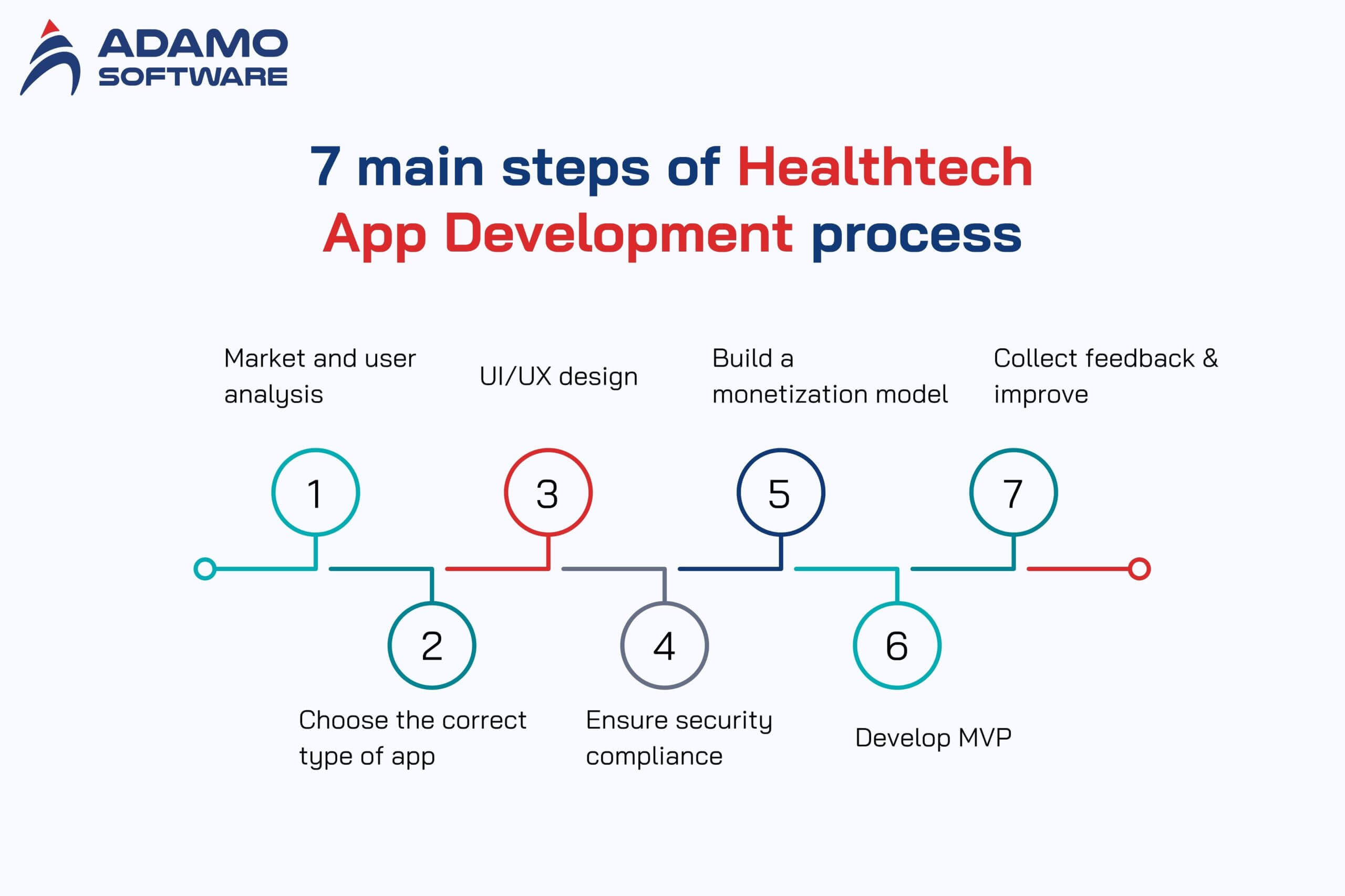
- Market and user analysis: Understand the problem the application solves and the actual needs of the target group.
- Choose the correct type of application: Determine the direction – health app or specialized medical app.
- UI/UX design: Focus on a user experience that is friendly, easy to use, and suitable for all age groups.
- Ensure security compliance (HIPAA, GDPR): Establish a solid legal foundation for handling personal data.
- Build a monetization model: Choose an effective monetization strategy that suits the habits of medical users.
- Develop MVP: Prioritize core features to validate ideas early, saving time and costs.
- Collect feedback and improve: Listen to users and continuously improve the app to increase long-term value.
1. Market Analyst
Start with a simple question: Who am I building this app for, and what problem is it solving?
Is it a diabetic who needs to track their readings? A person who needs mental health counseling? A doctor who wants to manage their prescriptions more effectively?
In healthtech app development, understanding your users correctly will help you avoid “having an app but no one using it”.
Once you have identified your target group, take the time to analyze the market: who are your competitors, what are they doing well, and where are they falling short? Based on that, you will easily find your competitive advantage.
Tools such as SWOT analysis, PEST analysis, or user journey mapping will help you see the potential and the risks to avoid before you start developing your app.
2. Choose The Right App Type
Will your app be a community-oriented product (like a personal health tracking app) or a specialized tool for medical facilities? The answer directly affects the budget, implementation process, and legal requirements.
Choosing the wrong direction from the beginning, you can spend a lot of time editing later. In the healthtech app development projects that Adamo has implemented, this point is often discussed in detail with partners right from the pre-production stage.
3. UI/UX Design
A good app is beautiful and needs to be easy to use and understand, especially for older people or people with vision problems.
UX design is not just about “what color, what font”, but how to help users feel comfortable and confident when using the app. In the healthcare industry, a smooth experience is a factor that retains users as important features.
4. HIPAA Compliance
This is a must for any product in the healthtech app development group. Personal health data is extremely sensitive information. A minor violation can lead to significant legal and reputational consequences.
Depending on the target market (US, EU, Canada, etc.), you must comply with HIPAA, GDPR, or PIPEDA regulations. In addition, do not forget to integrate layers of protection such as 2-step authentication, end-to-end encryption, and access authorization.
5. Monetization model
A healthtech app won’t succeed without a solid strategy. It’s the foundation that defines how your app will generate income and sustain long-term growth.
There are four common strategies to generate revenue from a healthtech app:
- In-app advertising: The app is free to download and use but displays ads during usage. Users can opt for an ad-free experience by upgrading to a premium plan.
- Freemium model: Basic features are accessible at no cost, while advanced tools or exclusive content require a premium upgrade.
- Subscription-based access: Users pay on a recurring basis—weekly, monthly, or annually—to unlock full access to the app’s capabilities.
- One-time purchase: The app is sold at a fixed price, granting users lifetime access to all features after a single payment.
Among the monetization strategies in healthtech app development, subscriptions remain the most popular option. However, models like freemium – with limited free access – are also widely adopted.
Users today expect to try an app before paying for it. This makes paid models less appealing. Therefore, offering a trial period can boost user trust and conversion rates.
6. MVP development
Don’t try to make an “all-in-one” app from the beginning. Clarify the core functionality, implement it neatly, and then test it. MVP (Minimum Viable Product) is a way to help you save time and costs and reduce risks.
In healthtech app development projects, MVP helps you verify: is there a need in the market, do users understand how to use it, and is the product on the right track?
7. Feedback and further improvements
Once you have real users, the most important thing is to listen to them. They will tell you what’s wrong, what should be added, and what makes them return (or leave).
Medical app development doesn’t end after launch. It’s a process of continuous improvement, where each update brings better value to users and affirms your position in the market.
IV. How to choose the right partner to build Healthtech App?
Finding the right partner to develop a healthtech app is not just about technical skills. In healthtech app development projects, the human factor – the mindset – and the way of working make a difference.
Here are 6 criteria to consider carefully before starting a technology partner:
- Clear product thinking
- Have a BA, UI/UX Designer participate from the beginning
- Engineers understand the product, not just write code according to the description
- Testers care about user experience
- Long-term commitment
- Stable team, few changes in people throughout the project
1. Product Mindset Excellence
A good partner will not simply “code on demand” but will know how to ask whether this product creates long-term value. They can provide solutions, not just implement them, and understand that app development is a continuous journey, not a one-time project.
2. Roles Focused on Products
A team specializing in healthtech apps cannot lack positions such as Business Analyst or UX Designer – people who connect technology with users’ real needs.
If your partner only has programmers, you will lack a system perspective, and it is easy to create an app that “works,” but no one uses it.
3. Emphasis on Designers over Coders
A good programmer is someone who thinks ahead: Is this feature scalable? Will it be easy to upgrade later? Can the app handle 100,000 users at the same time?
Choosing a partner with this mindset will help you save a lot of costs in the future, because they build the app with a long-term vision, not chasing temporary solutions.
4. Testers Familiar with User Needs
Truly excellent testers will step into the end user role: they not only check for bugs but also suggest improvements to make the app easier to use, faster, and more user-friendly.
In healthtech app development, testers are the last layer of defense before the product reaches the user, so don’t choose a partner with only a “QA checklist.”
5. Dedication to Long-Term Success
Medical is a special field: after launching, the app still needs to be maintained, updated, and ensured to comply with new regulations. Therefore, do not just look for a unit that “deploys and then quits” – choose a partner willing to accompany you for many years, from development to operation.
6. High Employee Retention
A good medical app usually takes months to years to complete and optimize. Having the same development team from start to finish – especially positions such as project manager and technical team leader – will help maintain product logic and increase work efficiency.
A stable staff ratio indicates that the partner has a good working culture, and you will not have to worry about changing engineers every 3 months.
V. Final thoughts
Healthtech apps are an essential part of the modern healthcare ecosystem. To build an effective healthcare app, businesses need a dedicated team, compliance with legal regulations, and a clear product mindset.

At Adamo Software, we have worked with many healthcare companies in Japan, Australia, and North America to build applications such as:
- Appointment booking & patient management platform integrated with insurance API and internal hospital system
- Application for monitoring treatment and reminding patients to take medication for chronic patients
- A remote health consultation system (telehealth) is integrated with secure video calls and in-app payments.
With more than 200 successful projects, including many products in the Digital Health group, Adamo understands the industry’s specific requirements: from HIPAA/GDPR compliance, data security, to optimizing performance when there are thousands of concurrent users.
If you’re planning your healthtech app development project, contact the Adamo Software team to build the most suitable solution for your business.




